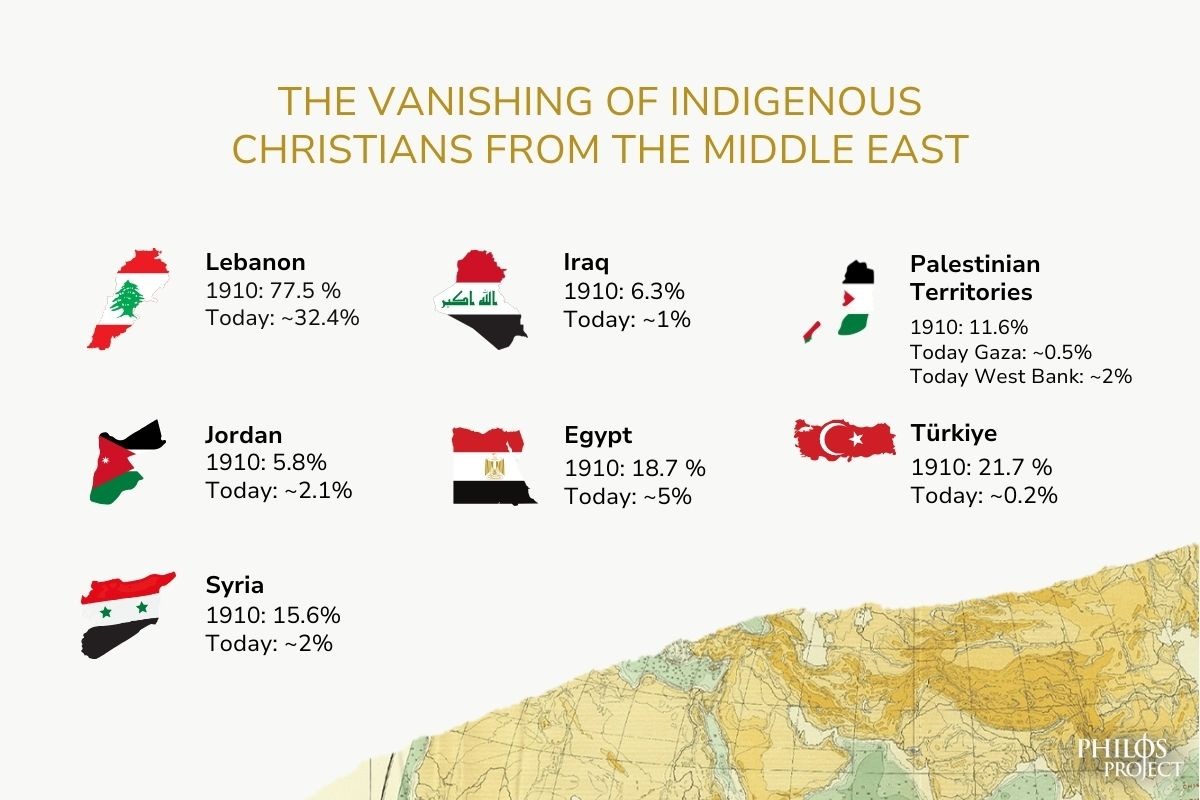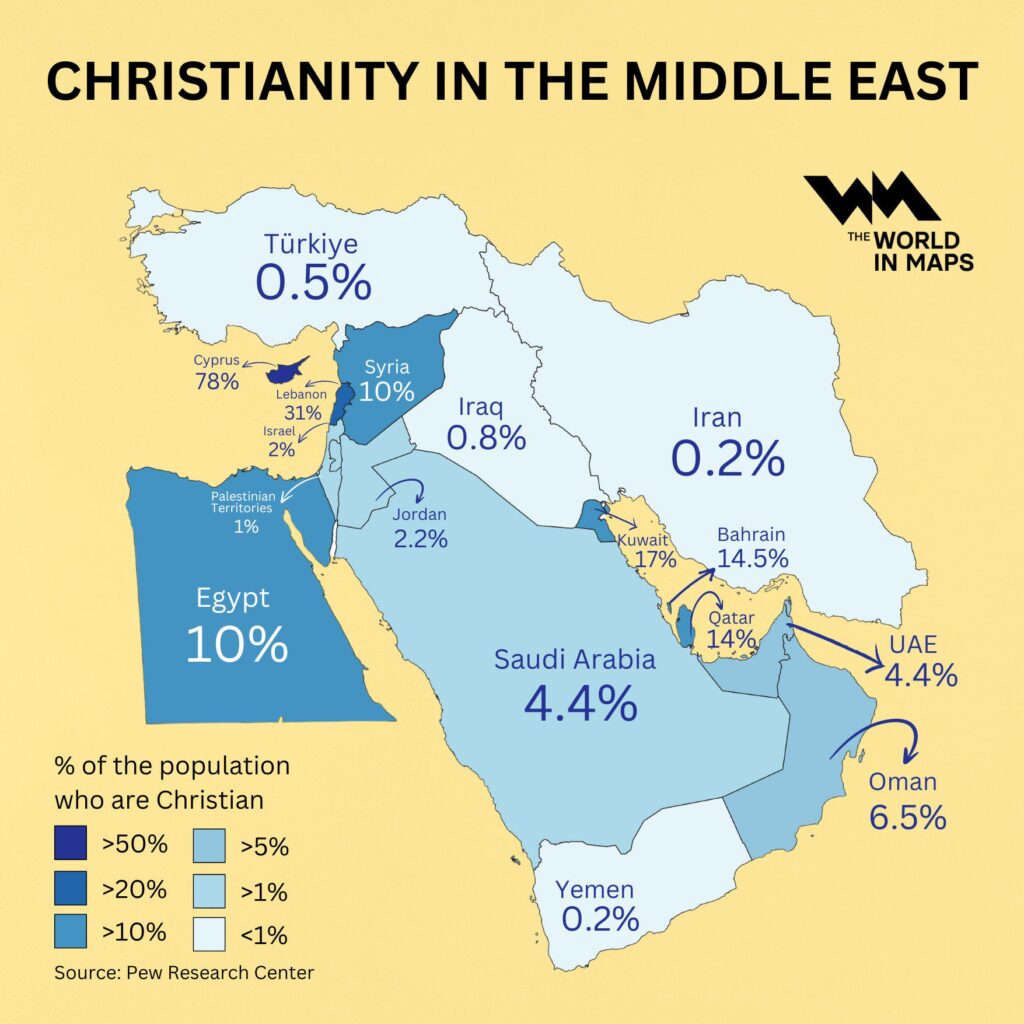Christians in the Middle East: A Community in Decline
Christians have lived in the Middle East since the earliest days of the faith, forming vibrant communities that predate Islam by centuries. From Egypt’s Coptic Christians to the Assyrians, Chaldeans, and Maronites of Iraq, Syria, and Lebanon, these communities have contributed to the region’s religious, cultural, and intellectual legacy. Yet in the 20th and 21st centuries, their numbers have plummeted.
In the early 1900s, Christians represented about 13% of the Middle East’s population. Today, that figure is closer to 4% and continues to decline. This exodus is fueled by political instability, sectarian violence, religious discrimination, and economic collapse. Major turning points included the 2003 Iraq War, the Arab Spring, and the Syrian Civil War. In many cases, Christians have been directly targeted by militant groups or caught in the crossfire of broader conflicts, prompting millions to flee to Europe, North America, and elsewhere. Churches that have stood for over a thousand years have been destroyed, and entire communities displaced, sometimes permanently.

The Decline of Christians in Syria
Syria, long known for its religious and ethnic diversity, has seen a particularly sharp decline in its Christian population over the past 20 years. Prior to the outbreak of civil war in 2011, Christians made up roughly 10% of Syria’s population—around 1.5 to 2 million people. These included Greek Orthodox, Syriac Orthodox, Armenian Apostolic, and Melkite Greek Catholics, many of whom spoke ancient dialects like Aramaic and had deep historical roots in the region.
Since the onset of the conflict, Syria has witnessed the mass displacement of Christians. Conservative estimates suggest that more than half have fled the country. Cities like Homs and Aleppo, once major centers of Christian life, have seen entire neighborhoods destroyed. Christian families have been forced to abandon homes, churches, and schools under threat from extremist groups or as a result of bombing and siege. Even as the war has subsided in some areas, fear of persecution, continued economic hardship, and lack of security have made return unlikely for many. Today, estimates put Syria’s remaining Christian population at fewer than 500,000, many of whom live in precarious conditions or in government-controlled areas with limited freedom.

